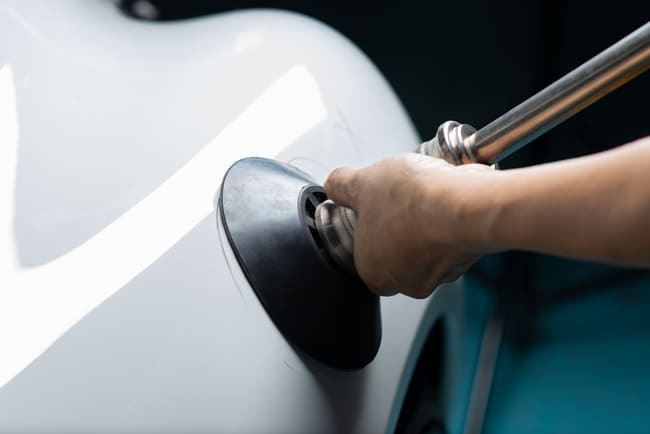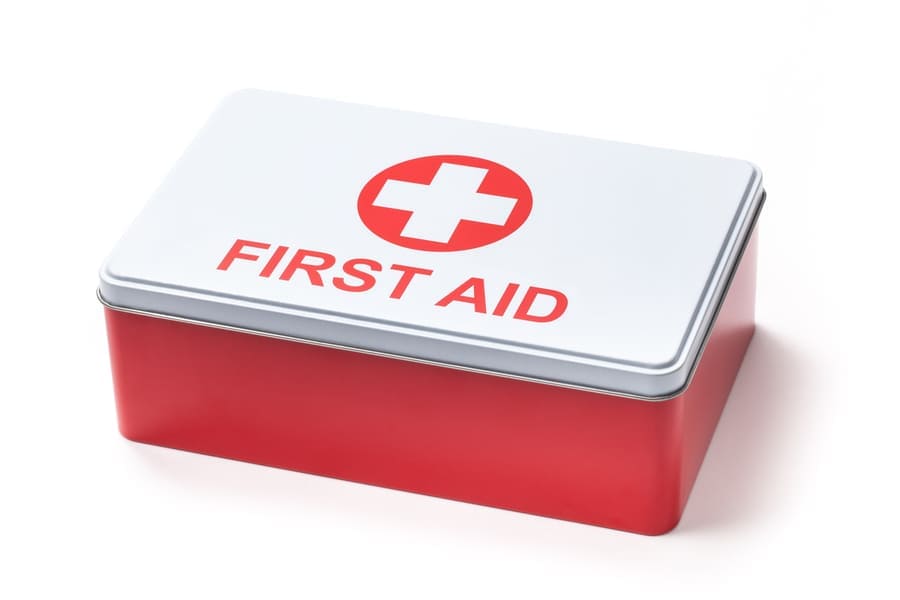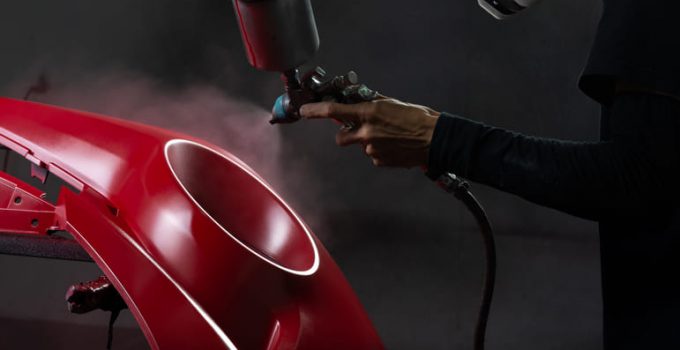
Unfortunately, dents and dings can happen. Maybe they were caused by hail or someone “bumped” into your can while it was parked. This can be extremely aggravating, especially since this means your car has depreciated in value. Taking your car to a garage may not be necessary, which is why we’ll give you some tips and tricks on how to repair dents yourself.
How to push – or pull – a dent out of your car

Dents are either pulled out or pressed out from the inside. When you push out from the inside, there are more ways to apply the necessary force. However, this requires extensive disassembly work. When popping out a dent, you always have the difficulty of applying enough force to the area without damaging the paint. That is why a vacuum is usually used for this procedure. You could also use adhesives, but again, you have to be very careful when you remove whatever residue got stuck to the car.
First try: Hot water
Before you approach the dents with tools, pour hot building water over the dent. If you are lucky, the sheet metal will relax and spring back to its original shape. This also works well with plastic bumpers. In any case, the hot water can provide enough heat to soften the paint and the material underneath.
Second try: The plunger
After you have pre-treated the area with hot water, you have already created the perfect base for a successful repair. If the dent is large enough, take a plunger and put the suction cup over the dent and then pull hard. This is usually a good way to repair large dents. If the dent or ding is smaller, use a smaller suction cup, for example, one from a mobile phone holder.

Attack from the back
If these attempts do not lead to the desired outcome, you have to “attack” the dent from the back. You could also apply traction to a dent with hot glue or a threadlocker, such as Loctite. However, be very careful as there is a great risk that you might damage the paintwork. Now is the time for the reverse side. For this you need:

First, remove the interior panelling. It is highly recommended to use a professional removal tool. The small tools are fairly inexpensive and they can be used to lift out the lugs and knobs of the door trim without breaking them off. Caution: the plastic film behind the door panel must be completely sealed again when reattaching, otherwise water will run into the interior during your next visit to the car wash!
Once the dent has been exposed, you have to warm it up first. If there are no plastic parts next to it, you can do this from the inside. Otherwise, just to be on the safe side, warm up the sheet metal with the hot air gun from the outside. Keep the heat at a minimum distance of about 6 in. or else you could quickly scorch the paint.
When the panel is warm and the dent is accessible, work carefully from the edge inwards. If the edge is difficult to get to, use the round stick: hold the rounded tip of the stick on the right spot. Now carefully tap the other end of the stick with the rubber mallet.
Always work in a circle, as this will give you the best results. The dent will eventually give up and spring back to its original shape, at least for the most part. The most important thing to remember when doing the dent removal is: less is more. Careful knocks lead to quicker success and avoid needless damage in the long run.
Even a partial success is a success
If the dent cannot be removed with the procedures described, then you can’t avoid filling and painting. However, every millimetre that a dent has bounced back means having to use less levelling compound. The thinner the levelling layer, the easier and more durable the repair will be. Thick layers of filler tend to flake off and they also like to soak up water causing problematic rust damage that can go unnoticed for a long time.
Filling – sanding – repairing
A bulging dent therefore helps to keep the levelling layer as thin as possible. In order to fill it, you have to roughen-up the paint or sand it off completely. After that you can apply the primer. Since you are going to be doing some spraying, careful masking is highly recommended, especially for creases and edges. The best-case scenario is always a colour repair from edge to edge. However, it is almost impossible to get a perfectly clean transition on the surface. If you have smaller areas, and an older car, you can try to do these repairs yourself. The colour match is important, so always use the exact same colour. You can find out the name of the colour at the car dealership where you purchased the car, for example.
When it comes to removing a single, or just a few dents and dings, painting can still be the most elegant and inexpensive way to go. However, if the whole car needs freshening up, there is an alternative to a new paint job: foiling. This has almost the same effect in improving the appearance of your car. The advantage of this is, that with a bit of practice, the foil overlay can be mastered by any reasonably handy do-it-yourselfer. Although it isn’t easy, it’s often much quicker to learn than the handling of a paint gun.
It doesn’t always have to be an expert
Whether or not you can repair, or remove a dent or ding yourself, depends on many factors. Mainly, there is your own willingness and the craftsmanship you bring with you. If you are motivated, ask yourself whether you can really repair the type of dent yourself. In that case, you might even be able to get the results you want with home remedies, sensitivity, and patience.








Comment